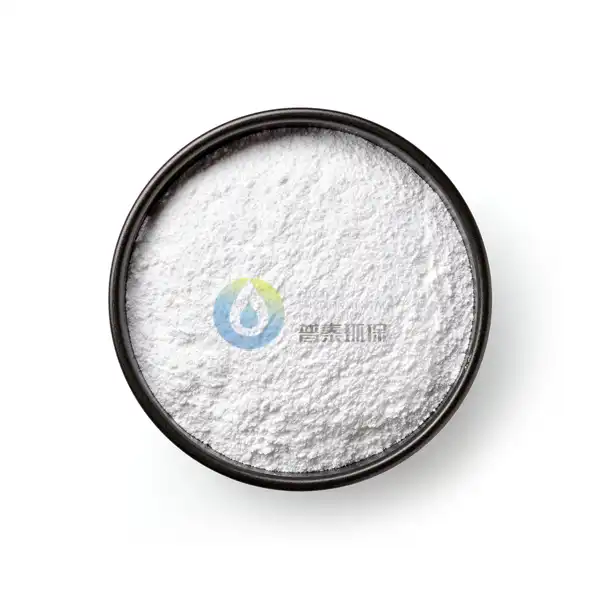Can SOP Fertilizer be Used for Foliar Application?
Sulfate of Potash (SOP) fertilizer has become increasingly popular among agricultural professionals and home gardeners alike, particularly when it comes to specialized application methods. One of the most pressing questions in modern agriculture is whether SOP fertilizer can be effectively used for foliar application – the practice of spraying nutrients directly onto plant leaves. This application method has gained significant attention due to its potential for rapid nutrient absorption and improved plant response, especially in situations where soil conditions may limit traditional root uptake.
What Makes SOP Different from Other Potassium Fertilizers?
Sulfate of Potash (SOP), also known as potassium sulfate, stands apart from other potassium fertilizers due to its unique chemical composition and beneficial properties. Unlike its counterpart Muriate of Potash (MOP), SOP contains both potassium and sulfur in forms readily available to plants. The potassium content typically ranges from 48-52%, while sulfur content is approximately 18%. This dual-nutrient composition makes it particularly valuable for crops that require both elements for optimal growth and development.
The distinguishing characteristic of SOP Fertilizer lies in its chloride-free nature, making it especially suitable for chloride-sensitive crops such as fruits, vegetables, and specialty crops. The sulfate form of potassium in SOP also contributes to improved nutrient uptake efficiency, as it readily dissolves in water and can be easily absorbed by plant tissues. This high solubility is particularly important when considering foliar application, as it allows for better absorption through leaf surfaces.
Additionally, SOP's lower salt index compared to other potassium sources means it poses a reduced risk of leaf burn when applied foliarly. This characteristic is particularly valuable in situations where frequent foliar applications are necessary or when dealing with sensitive crop varieties. The specialized production process of SOP, whether through the Mannheim process or natural mineral extraction, results in a high-quality fertilizer that can be effectively used in various application methods, including precision farming techniques.
How Should SOP be Applied for Maximum Foliar Efficiency?
The successful foliar application of SOP fertilizer requires careful attention to several critical factors to maximize its efficiency and effectiveness. The timing, concentration, and application technique all play crucial roles in achieving optimal results. When preparing a foliar spray solution, it's essential to maintain the correct concentration – typically between 2-3% for most crops, though this can vary depending on specific crop requirements and growth stages.
One of the most critical aspects of foliar application is the timing of application. Early morning or late evening applications are generally most effective, as these times typically feature optimal conditions with lower temperatures and higher humidity. These conditions allow for slower drying of the spray solution on leaf surfaces, promoting better nutrient absorption. The presence of dew on leaves in the early morning can also help in the spreading and absorption of the solution.
The particle size of the SOP solution is another crucial factor. Smaller particles generally result in better coverage and absorption. Modern spray equipment with appropriate nozzles should be used to achieve the desired droplet size. The addition of a suitable surfactant can significantly improve the spreading and sticking properties of the spray solution, enhancing the overall effectiveness of the foliar application.
Temperature and humidity conditions during application significantly impact success rates. Ideal temperatures range between 18-25°C (65-77°F), while relative humidity should be above 65%. Higher temperatures can lead to rapid evaporation of the spray solution, reducing its effectiveness, while very low humidity can have similar negative effects. Wind speed should also be considered, as excessive wind can lead to uneven application and drift.
Crop monitoring and tissue testing before application can help determine the optimal timing and frequency of foliar applications. The growth stage of the crop is particularly important, with applications often being most effective during critical growth periods such as flowering, fruit set, or rapid vegetative growth.
What Are the Benefits of Using SOP as a Foliar Spray?
The use of SOP Fertilizer as a foliar spray offers numerous advantages that make it an attractive option for modern agricultural practices. One of the primary benefits is the rapid response time compared to soil applications. When applied foliarly, nutrients can be absorbed directly through the leaf surface and transported to areas of need within hours, making it an excellent choice for addressing immediate nutrient deficiencies.
Foliar application of SOP has shown remarkable results in improving crop quality parameters. Studies have demonstrated enhanced fruit color, increased sugar content, and improved storage life in various fruits and vegetables. The presence of both potassium and sulfur in readily available forms contributes to better photosynthetic efficiency and improved protein synthesis, leading to stronger plant development and increased stress tolerance.
The economic efficiency of foliar SOP application is another significant advantage. While the initial cost per unit of nutrient may be higher compared to soil applications, the improved nutrient use efficiency and reduced total quantity required often result in better cost-effectiveness. This is particularly true in situations where soil conditions might limit nutrient availability or in high-value crops where quality improvements can lead to substantial price premiums.
Environmental benefits are also noteworthy. Foliar application typically requires lower total amounts of fertilizer compared to soil application, reducing the risk of nutrient leaching and groundwater contamination. The precise application method allows for better targeting of nutrients to the crop, minimizing waste and environmental impact. This aspect is becoming increasingly important as agricultural sustainability continues to gain prominence in modern farming practices.
Research has shown that foliar SOP Fertilizer application can enhance crop resilience to various environmental stresses. The quick absorption of potassium helps plants maintain better water relations during drought periods, while the sulfur component aids in the production of compounds that help plants cope with both biotic and abiotic stresses. This improved stress tolerance can lead to more stable yields under challenging growing conditions.
Xi'an Putai Environmental Protection Co., Ltd. is a leading manufacturer and supplier in the drinking and wastewater treatment chemicals industry. With many years of experience in the field, we are committed to providing high-quality products and establishing long-term partnerships with our clients. Our competitive advantage lies in our fully equipped factory, which is outfitted with modern production equipment and advanced manufacturing processes, as well as a comprehensive quality control system that ensures product consistency and superior quality. Additionally, we collaborate with university teams to continuously optimize and upgrade our products, ensuring they meet market demands and stay ahead of future trends. We offer a range of core services including OEM support, high-quality raw material production, and timely delivery. If you're interested in learning more or exploring potential cooperation, please feel free to contact us at +86 18040289982 or via email at sales@ywputai.com. We look forward to the opportunity to work with you.
References:
1. Journal of Plant Nutrition (2023) "Foliar Application of Potassium: Effects on Crop Growth and Yield"
2. Agricultural Water Management (2024) "Efficiency of Different Potassium Sources in Foliar Applications"
3. Soil Science Society of America Journal (2023) "Comparing SOP and MOP in Modern Agriculture"
4. HortScience (2024) "Nutrient Uptake Mechanisms in Foliar Fertilization"
5. Plant and Soil (2023) "Effects of Sulfate of Potash on Crop Quality Parameters"
6. Frontiers in Plant Science (2024) "Modern Approaches to Foliar Nutrition in Agriculture"
7. Nutrient Cycling in Agroecosystems (2023) "Environmental Impact of Different Fertilizer Application Methods"
8. Journal of Agricultural Science (2024) "Optimization of Foliar Spray Techniques for Various Crops"
9. European Journal of Agronomy (2023) "Economic Analysis of Foliar vs. Soil Fertilizer Applications"
10. Advances in Agronomy (2024) "Latest Developments in Potassium Fertilization Techniques"

_1729215837243.webp)
_1729215772183.webp)

_1729233544024.webp)
_1729215651315.webp)
_1729215530587.webp)
